
Typing the Group Mind, Part I
The Type of a Team
Part One of an Interview with John Beebe, MD
John Beebe, March 1, 2011
 PTD: John, we have been wanting to ask you for some time what your thoughts on the concept of “team type” are, what value there is in trying to develop an understanding of the type of a team as opposed to just knowing the types of its individual members.
PTD: John, we have been wanting to ask you for some time what your thoughts on the concept of “team type” are, what value there is in trying to develop an understanding of the type of a team as opposed to just knowing the types of its individual members.
BEEBE: The question asserts that a team may have a type, and I’m glad that it does. There is a term in Buddhist philosophy that I believe might be helpful in understanding the nature of team consciousness. That is Dependent Origination, and it means that no matter how unique or original each of us may believe each other to be, what is most original about us, our consciousness, is dependent on our interactions with each other. That is because consciousness is an eco-system rather than the province of individual egos only. Ideas emerge in interaction with other people.
Those other people are inside us anyway. Jung taught that ego-consciousness itself emerges out of a network of personalities within the person, which he called complexes, and I have followed him to map this development as I have experienced it myself. In his pioneering investigations of personality complexes, Jung saw that each complex contains its own splinter of consciousness, and he recognized that this splinter had a type, at least what we would now call a single function- attitude. I have added the notion that the type expresses itself through the archetypal role that is at the heart of the personality of the complex.1
With that model in mind, I have not found it much of a stretch to consider that what happens in the development of a person may also happen in a team, where you find a similar picture of partly conscious personalities working together to create the pattern of consciousness in the team, to which we can then assign a type, because the dominant and auxiliary function will be especially clear. That is to say, in a working team within an organization or corporation you will find different people playing different roles and, in so doing, enabling each other to articulate their positions. In the course of working on such a team, you learn to value the different attitudes and functions that the various team members represent. Beyond that, you get to see that the consciousnesses you and the other members of the team are learning to appreciate in each other are the strength that is emerging out of the system as a whole. The different individuals, as I see it, are simply giving voice to the differentiation that is coming into being. Of course the individual team members are very important to how consciousness develops; but it is their interaction with each other that determines what pattern of consciousness will define the team, and the gifts it can bring to the organization it serves.
This is the model I’d like you to hold in mind as we talk about the type of a team. The team we are talking about, of course, is one that is actually busy generating consciousness. This kind of team accepts the work involved to produce, not just a profit, but a really interesting differentiation of consciousness that has the chance to enhance not only the lives of the members of the team, but also of anyone who avails themselves of a product that team is able to bring into the world. The product, in other words, is an effective symbol of the consciousness of the process that produced it. To me this is a business model that we can be proud of from the standpoint of psychological type development. So it seems to me that we should also be looking at the team that doesn’t make it. We should be looking at the situations where consciousness doesn’t really emerge. Everyone knows the dead, dull feeling we have when we work in a group where things are really not coming together. Sometimes that’s the case even if the business is making money and our jobs are secure. Despite the financial reward, nobody feels good about what they’re doing. There’s that dissatisfied feeling members of a team get when they know that no real consciousness is generated. That kind of working situation quickly loses its meaning, and eventually its profit too, whereas life in a working situation that is generating consciousness is endlessly satisfying, even in lean years, and in the long run, the business thrives as well.
PTD: John, what I’m hearing is that the members of a team come together with each of them representing a mental process or position, and it’s my job as a team leader to ask, “OK, what mental processes are they bringing together consciously, and which ones might they be omitting? Which ones might be unconscious for their team?” Is that it?
BEEBE: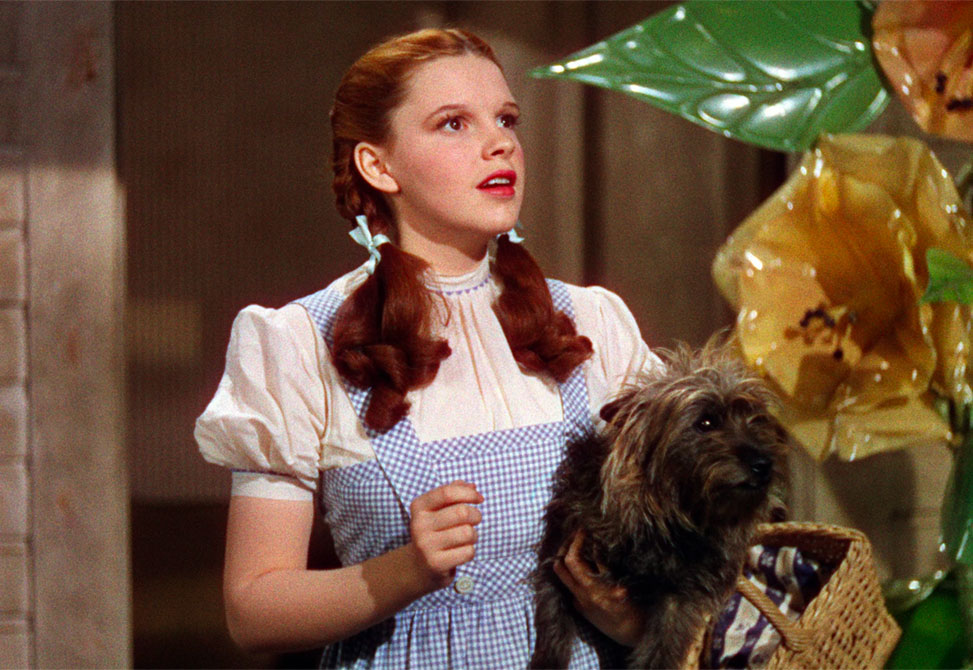 That’s correct. I’d add only that you also have to appreciate the consciousness that is already there. As a positive example, I often bring up the MGM film The Wizard of Oz, the remarkable product of a team effort at the studio, to point to the kind of consciousness that makes team building easy. The Heroine of that film is Dorothy, who as played by Judy Garland, is a perfect example of the kind of consciousness that most supports the building of a team. The actress’s appreciation of the different energies brought forward by the other actors playing the various fantasy characters encourages each character to show Dorothy his or her most characteristic consciousness. As a result, I find it unusually easy to spot the function-attitude that is most characteristic of each of the Oz personalities. I found it compelling to put the character played by Judy Garland at the top of the list of the eight function-attitudes I identify as creating the structure of that movie2 because she has the most wonderful ability to bring her extraverted feeling to each of the other characters in the film. Sometimes it’s a more negative feeling, if it’s the Wicked Witch, a more positive one if it’s the Scarecrow or Tin Man or Lion, and a more ambivalent one if it’s the Wizard, but by the end she has responded to every character’s essence, the part of consciousness that it manifests, with her feeling and in that sense affirmed it. At the end of the film, when she wakes up back home, there’s a moment when Dorothy has seven other characters crowding around her bed, the eight of them on the screen represent the Whole Type Model of consciousness right before our eyes.
That’s correct. I’d add only that you also have to appreciate the consciousness that is already there. As a positive example, I often bring up the MGM film The Wizard of Oz, the remarkable product of a team effort at the studio, to point to the kind of consciousness that makes team building easy. The Heroine of that film is Dorothy, who as played by Judy Garland, is a perfect example of the kind of consciousness that most supports the building of a team. The actress’s appreciation of the different energies brought forward by the other actors playing the various fantasy characters encourages each character to show Dorothy his or her most characteristic consciousness. As a result, I find it unusually easy to spot the function-attitude that is most characteristic of each of the Oz personalities. I found it compelling to put the character played by Judy Garland at the top of the list of the eight function-attitudes I identify as creating the structure of that movie2 because she has the most wonderful ability to bring her extraverted feeling to each of the other characters in the film. Sometimes it’s a more negative feeling, if it’s the Wicked Witch, a more positive one if it’s the Scarecrow or Tin Man or Lion, and a more ambivalent one if it’s the Wizard, but by the end she has responded to every character’s essence, the part of consciousness that it manifests, with her feeling and in that sense affirmed it. At the end of the film, when she wakes up back home, there’s a moment when Dorothy has seven other characters crowding around her bed, the eight of them on the screen represent the Whole Type Model of consciousness right before our eyes.
That, for me, sums up what I am hoping we can learn to recognize when we work in a team. Watching The Wizard of Oz, we are led to grasp how the eight part-personalities of type have somehow created the movie we’ve just seen, which becomes Dorothy’s dream of consciousness. The different personalities created the delight that we got out of that film by the way they were able to play together, and their perfect interaction, which is reprised for us at the end of the movie, in this little curtain call, is a model for what I mean by team consciousness. It beautifully illustrates what can emerge when different persons representing different function-attitudes can manifest the miracle of Dependent Origination. The originality of such a group effort is dependent on the interaction of the part-consciousnesses to create a whole, a consciousness that grows out of their dependence on each other.
To be able to affirm what a team can become, it helps to have grown up believing in American democracy and to have been educated by Isabel Briggs Myers’ interpretation of Jung’s ideas to recognize the worth of each individual’s different psychological gift. I don’t want to be so naïve as to say that every group is automatically wonderful in the consciousness it generates, just because it’s a group. A well-functioning group can be extremely destructive, as was the leadership of Nazi Germany when it started World War II, the very same year that The Wizard of Oz had been released by the team at MGM. The Nazi team, though similarly well organized, was absolutely evil.
 At the same time, we should not assume, as so many people do today, that a group is likely to be bad just because it’s a group. We all know people who, if they so much as hear the word “corporation,” think something bad is being referred to. We’ve heard the same kind of cynicism directed toward the Congress of the United States, or various teams in professional sports. We’re often told there’s not even good baseball anymore: the players have all sold out, are on drugs, or both. But anybody who watched the San Francisco Giants play in the 2010 World Series saw an exquisite team of individuals working together, especially in their fielding. Watching a team playing the way they did was very beautiful, because the integrity of a sport, when “team-work” is really working, shines through in the playing. Perhaps it’s just a matter of where I’m from, but I felt that although there were wonderful individual players on the Texas Rangers side, with them I was seeing a series of masculine individuals who never quite gelled as a team. The Giants, on the other hand, with their beards, their long hair, and in Lincecum’s case, extreme thinness, seemed less self-conscious about their personas and, in their intense relatedness, more comfortable with each other. I thought one of the healthiest things about the Giants was how much the players were allowed to be their individual selves, even in the way they moved (Lincecum, for instance, unafraid to contort his body to achieve an exact throw). They were not trying to look like someone else’s idea of a man. Each was an individual, working in a team spirit, and that, for me is what a functional team looks like.
At the same time, we should not assume, as so many people do today, that a group is likely to be bad just because it’s a group. We all know people who, if they so much as hear the word “corporation,” think something bad is being referred to. We’ve heard the same kind of cynicism directed toward the Congress of the United States, or various teams in professional sports. We’re often told there’s not even good baseball anymore: the players have all sold out, are on drugs, or both. But anybody who watched the San Francisco Giants play in the 2010 World Series saw an exquisite team of individuals working together, especially in their fielding. Watching a team playing the way they did was very beautiful, because the integrity of a sport, when “team-work” is really working, shines through in the playing. Perhaps it’s just a matter of where I’m from, but I felt that although there were wonderful individual players on the Texas Rangers side, with them I was seeing a series of masculine individuals who never quite gelled as a team. The Giants, on the other hand, with their beards, their long hair, and in Lincecum’s case, extreme thinness, seemed less self-conscious about their personas and, in their intense relatedness, more comfortable with each other. I thought one of the healthiest things about the Giants was how much the players were allowed to be their individual selves, even in the way they moved (Lincecum, for instance, unafraid to contort his body to achieve an exact throw). They were not trying to look like someone else’s idea of a man. Each was an individual, working in a team spirit, and that, for me is what a functional team looks like.
We can oppose this image of the San Francisco Giants to the kind of team we see in some corporations where the different members of the team try so hard to maintain the same corporate persona that they come across as anonymous. On such a team, nobody shows any individual peculiarities; you can’t feel their archetypal energy, because that would make them individual, and peculiar. Everybody is trying, instead, to maintain the agreed-upon tone. When I see that as a team’s main effort, the only archetype I recognize is the persona, and I’m sure that no real consciousness can emerge from behind such a mask. Such conformity to the persona as a value will only produce a stagnation of ideas within the team, which is one of the fastest ways I know to lead an organization into decline.
To enable a team to generate consciousness in the sense of alertness to emerging opportunities to cope and prosper, one has both to make room for the individual and then allow the individuals maximum freedom to really work together. People in California talk a lot about Hewlett-Packard, which for many years had a business model created by the founders, which really allowed the maximum contribution and creativity from each of the individuals working in that corporation. Then, in a cost-saving move, they pretty much stripped away many of the original principles, and the company that had made itself great began to decline.
Many people don’t see why, in a business that exists to generate profits, attention should be given to letting individual consciousnesses come forward in a team. Those managers who fear the inefficiency that might result have usually wanted to streamline the process in a less psychological way, by creating one orientation (usually extraverted thinking) that can be applied as an expectation to everyone on the team. Working as part of a team in one of those companies where everybody is trying to satisfy a set of rules about how you’re supposed to function on the job, not infrequently leads team members to develop a dulled state of mind, and their individual creativity tanks along with the consciousness of the team. I suppose all Americans have sometime or other been in a working situation like that, because extraverted thinking can so often dominate in this country. This is sad, though understandable because an extraverted thinking plan can look great on paper; but if it can’t enable the people responsible for implementing the plan to come forward as themselves and interact as a team of individuals to generate new consciousness that might modify or even replace the plan, the corporation will lose the vision, flexibility, and energy it needs to stay viable.
PTD: John as I’ve listened, a couple of things come to mind. One is: Last night the University of Connecticut women’s basketball team set the all-time record with 89 wins.
BEEBE: Yes, I heard about that. Do you know something about how they function as a team?
PTD: It would be a phenomenal group to go investigate, to try to understand how they pulled it together as a team to be able to break UCLA coach John Wooden’s streak of wins by examining their coach’s strategy and how we see that at work.
BEEBE: Did you see them play? Did you actually watch them?
PTD: Yes, I have watched them play.
BEEBE: Now, do they look like individuals? Do the different women look like clones of each other, or do they look like separate individuals as well as interacting team players?
PTD: They are separate individuals, and each member has a role. Of course they’ve got one person who last night scored forty-two points, and she’s the leader of the team. Yet there’s another young student, and I don’t know whether she’s a freshman or sophomore, who they just counted on to score three-point shots, and she was just phenomenal out there. The announcers were explaining that her role in the game was to shoot from beyond the arc. My images of them in a lot of ways are really aligning with what you’re talking about: each member having a role and not merging into an undifferentiated blob.
BEEBE: 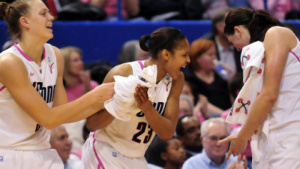 Could you see an attitude of mutual affirmation taking place? Could you actually see them affirming each other? Was there any kind of group consciousness that allowed you to see them signaling to each other something like “I’m OK, You’re OK?” Did you get any sense of a group of women making each other feel good about being in their group together?
Could you see an attitude of mutual affirmation taking place? Could you actually see them affirming each other? Was there any kind of group consciousness that allowed you to see them signaling to each other something like “I’m OK, You’re OK?” Did you get any sense of a group of women making each other feel good about being in their group together?
PTD: Absolutely.
BEEBE: How did they do it?
PTD: There were a number of examples of how they would congratulate one another, such as reaching out and touching one another.
BEEBE: It was often physical, wasn’t it?
PTD: That’s correct.
BEEBE: Then, in their case, it was more likely extraverted sensation than extraverted feeling that was being used to keep each other mobile and alive.
PTD: Right. The television press kept replaying one clip with this young player who was hitting from beyond the arc. She comes off the court at a time-out and Gino, who’s the coach, puts his arm around her and gives her a kiss.
BEEBE: Now that sounds like extraverted sensation working in tandem with feeling. What was happening with the San Francisco Giants was different. The most idiosyncratic looking player on the field was Tim Lincecum, who seemed to me predominantly introverted sensation, which I concluded from the way he would do whatever it took with his body to get the effect he wanted. He didn’t worry about any obvious sort of extraverted sensation grace. To my eye, it was a pure introverted sensation performance. You wouldn’t imagine him normally touching another player. So Lincecum did not live up to our stereotype of an American athlete, which I think is an extraverted sensation stereotype, and yet the way in which he used his introverted sensation, not only to pitch, but to imagine what was going on around the diamond so that he could quickly get an “out” if somebody was trying to steal a base, had an uncanny way of relating to the whole of what was happening. That helped to inspire the kind of cooperation he got from the rest of the infield. You got the feeling they were connecting with each other through introverted sensation rather than through extraverted sensation, and that’s unusual in American sports.
The UConn women, from your description, were using extraverted sensation, something we more often expect from athletes, but they too had added something extra that was unusual. There was, if I hear you right, an extraordinary degree of feeling accompanying the sensation. The question for me, therefore, would be whether what accompanied the coach’s extravagant extraverted sensation kiss was extraverted feeling or whether, as I suspect, you were seeing a combination of extraverted sensation and introverted feeling, which, since it seemed to mirror her energy as a team player, might give us the type of the team as a whole, i.e. ESFP. To verify this assessment, I have to ask you, since you have actually seen it, was his kiss finally an enactment of introverted feeling? Did the kiss represent him saying not so much, “You’re so great,” which would be extraverted feeling, as “Let me tell you how good I feel about you?” which I think would be introverted feeling. If so, I would speak of him as touching his player with extraverted sensation but appraising her with introverted feeling, and thereby creating a powerfully original form of validation that extraverted feeling could not have approached. Does that add up to you?
PTD: It really does. I saw the kiss when it happened and it was like, OK, here’s a man who really admires this player. And it wasn’t just recognizing her, it was more…
BEEBE: If I may interrupt to finish your sentence, I’d say “…about him.” He was letting her know how he felt…
PTD: …about her!
BEEBE: Yes. You see, Dorothy in The Wizard of Oz wouldn’t do that. Dorothy would not necessarily lean forward and kiss someone just because they’d done something she really appreciated. She might not, because extraverted feeling is a little more careful about observing the boundaries of the other person, and more concerned with what others might think. And a male coach kissing a female player could move people to wonder, “Is something going on?” or “Is this sexual?” There are a lot of extraverted feeling reasons why you wouldn’t kiss a player of the opposite sex if you were in his role. But what made it charming, from the way you described it, was that it was just an expression of the way he felt in the moment, and he wasn’t inhibited about communicating it. So that makes me wonder, again, to illustrate how I go about typing a team, if we’re not looking at extraverted sensation heroism and introverted feeling fatherliness enacted within a team that has evolved an extraverted sensation, introverted feeling consciousness that allows these functions to come forward in the moment in an original and satisfying way (dominant Se, auxiliary Fi = ESFP).
PTD: I think you’re speaking to my underlying question, John: How do we come up with a team type? Is that where you’re going?
BEEBE: Yes it is. I’m following the same rule with teams that I apply to individuals when I try to locate their types. If you want to identify the auxiliary function in a team, you have to look at how people take care of each other. And I think this coach was taking care of his player using introverted feeling when he gave her that kiss. Of course such fine diagnosis depends first, on whether you accept that an extraverted dominant function will be accompanied by an introverted auxiliary; second that you can distinguish introverted feeling from extraverted feeling; third on whether you believe, as I do, that you can use an introverted function to take care of another person; and fourth whether you agree with me that the main use of the auxiliary function is to take care of others. These are my ways of distinguishing the auxiliary function from the dominant in a team, and thus establishing its type. If you can’t accept those tenets of type diagnosis, learned from the study of individuals, what I have said about team type will simply make no sense.
Note: Interview conducted by Bob McAlpine on behalf of PTD, Dec. 23-24, 2010.
1 John Beebe, “Understanding Consciousness through the Theory of Psychological Types,” Analytical Psychology, ed. Joe Cambray and Linda Carter (Hove, England: Brunner Routledge, 2004) 83-115.
2 John Beebe, “The Wizard of Oz: A Vision of Development in the American Political Psyche,” Jung and Film II, ed. Christopher Hauke and Luke Hockley (London and New York: Routledge, 2011).


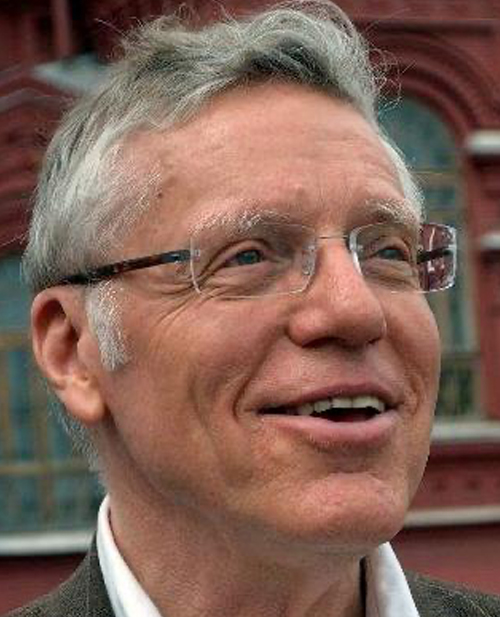


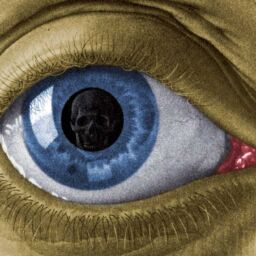
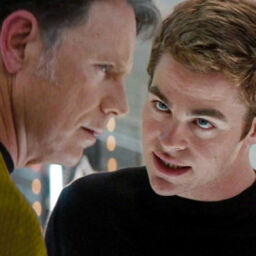







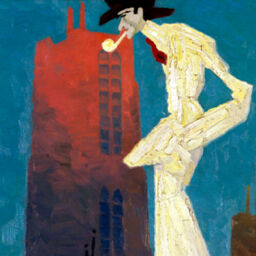
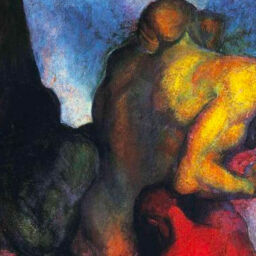

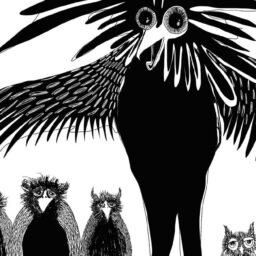
Having lived in Minnesota for four years and the midwest for about 14 years, I have come to conclusion that the Minnesota Vikings will never win the Super Bowl. During my time in the midwest, the Vikings went to four Super Bowls and lost four times. The midwest culture is very Si-Te and the expression of feelings are not valued. For the Vikings to win the Super Bowl would be an exercise in expressing emotion that Minnesotan’s frown upon; they would actually have to cheer and be proud of the accomplishment. Bud Grant, the esteemed coach of the Vikings in the 1960’s and early 70’s never expressed emotion even when his team won big. No one knew if he was happy or sad when they won. I remember one summer at the training camp a player accidently ran into Grant as he ran out-of-bounds. Grant, jokingly kicked the player in the butt. The sports commentators loved it and said it was the most show of emotion they ever saw from Grant. I see this not only being an issue of Team Type but also of culture type and how the culture we live in either helps or hinders our success.